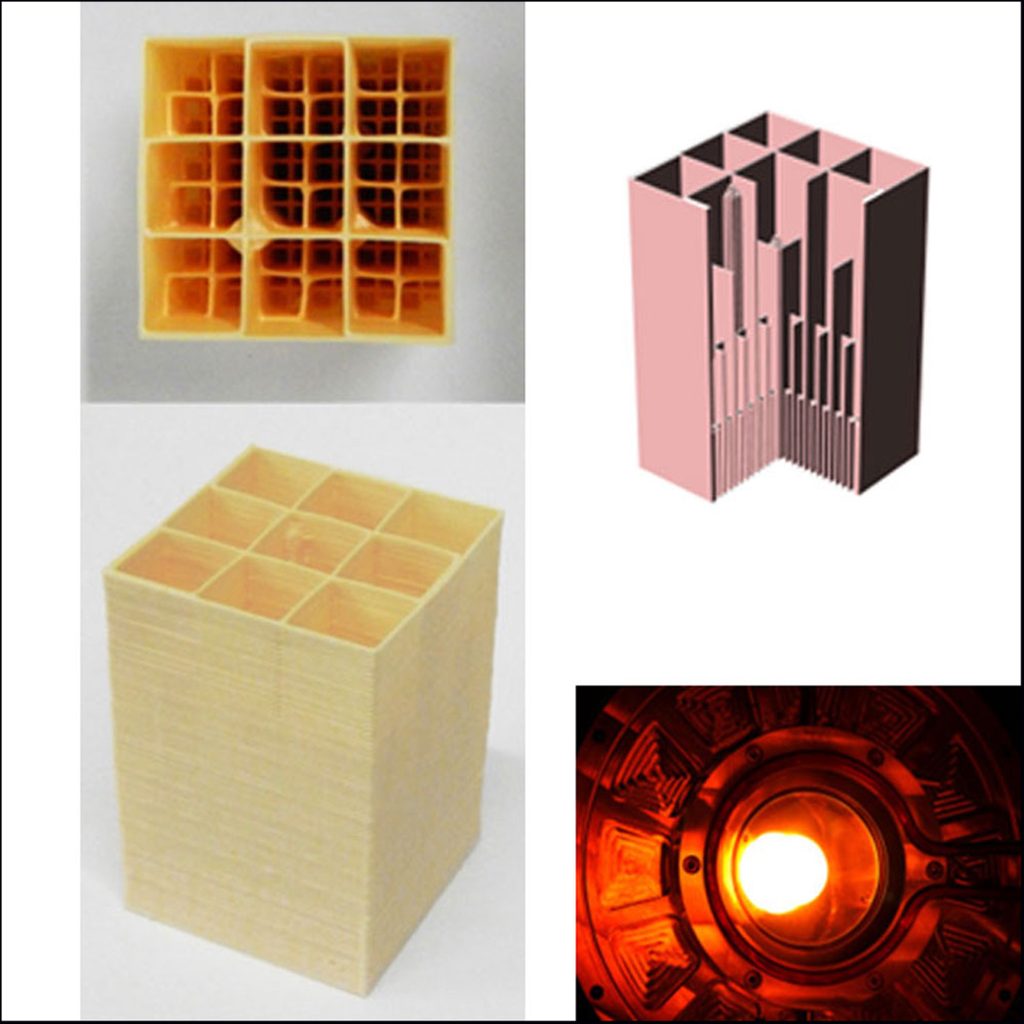Researchers at ETH Zurich have developed a 3D printed ceramic structure optimized for use in solar reactor cores.
The team has reportedly developed a novel 3D printing methodology that enables the fabrication of porous ceramic structures with complex pore geometries. These new graded designs allow solar radiation to be more efficiently transported into the reactor’s interior.
Initial experimental testing highlights that these 3D printed structures can double the production yield of solar fuels, compared to previous isotropic designs.
ETH spinoff companies Climeworks and Synhelion are now working to advance and commercialize this research. The technology for 3D printing the ceramic structures has been patented, with Synhelion recently acquiring the license from ETH Zurich.
The researchers are from the group of André Studart, ETH Professor of Complex Materials, and the group of Aldo Steinfeld, ETH Professor of Renewable Energy Carriers. The project is being funded by the Swiss Federal Office of Energy.
“This technology has the potential to boost the solar reactor’s energy efficiency and thus to significantly improve the economic viability of sustainable aviation fuels,” explained Steinfeld.

3D printing solar reactor cores
This new development marks the latest step in ETH Zurich’s ongoing effort to optimize the production of renewable energy. Indeed, the organization has already developed technology that can produce liquid fuels from air and sunlight. Back in 2019, the entire thermochemical process chain was demonstrated under real conditions for the first time, at the ETH Machine Laboratory.
ETH Zurich’s synthetic solar fuels are carbon neutral, releasing the same amount of CO2 as was collected from the atmosphere during energy production. Key to this production process is a solar reactor. This element is exposed to concentrated sunlight via a parabolic mirror, and can reach temperatures of up to 1500℃.
The interior of the solar reactor contains a porous ceramic structure made of cerium oxide. Here, a thermochemical cycle occurs, splitting water and CO2 captured from the atmosphere. This process creates a mixture of hydrogen and carbon monoxide called Synthesis gas or “syngas”. This chemical mixture can then be further processed into liquid hydrocarbon fuels such as kerosene, used in the aviation industry.
These structures traditionally possess isotropic porosity, which can rapidly reduce the force of the solar radiation as it travels into the reactor. This can lower the inner temperature of the reactor core, limiting fuel yield as a result. To combat this, ETH Zurich’s research has developed a novel methodology that allows structures with complex pore geometries to be 3D printed, enabling solar radiation to be more efficiently transported into the interior of the reactor.
According to ETH Zurich, hierarchically-ordered designs that incorporate exposed channels and pores, and become narrower towards the rear of the reactor, are especially efficient. This design reportedly allows the incident solar radiation to be absorbed over the full volume of the ceramic structure. As such, the entire porous structure can reach the 1500℃ reaction temperature, boosting fuel generation.
The research team’s ceramic structures were produced using an extrusion-based 3D printing process. A new ink was also used, which possesses low viscosity and a high concentration of ceria particles. These characteristics reportedly maximize the amount of redox active material.
Once 3D printed, the ceramic structures underwent testing to investigate the interplay between the radiant heat and the thermochemical reaction. During this testing, the researchers demonstrated that their hierarchical structure can produce twice as much fuel as uniform structures when subjected to the same concentrated solar radiation.

3D printing and sustainable energy
Additive manufacturing is a growing technology within the sustainable energy sector.
Researchers at the Skolkovo Institute of Science and Technology (Skoltech) have used a novel 3D printing technique to produce a complex ceramic part for use in environmentally friendly solid-oxide fuel cells (SOFCs).
The Skoltech team developed their combined micro-stereolithography technology and a common office projector to produce the SOFCs, which incorporate a hierarchical lattice structure. According to the researchers, the lattice structure enhances the ionic conductivity of the 3D printed fuel cells, maximizing their power output. This is said to be key to accelerating their industrial adoption.
Elsewhere, the HyP3D project recently announced a breakthrough in the production of high pressure hydrogen using ceramic 3D printing. The project, which includes collaboration from French 3D printing OEM and service bureau 3DCeram, aims to showcase the viability of high-pressure Solid Oxide Electrolysis Cell (SEOC) technology. HyP3D is combining this technology with advanced ceramics 3D printing to enable efficient and sustainable production of high-pressure hydrogen.
Subscribe to the 3D Printing Industry newsletter to keep up to date with the latest 3D printing news. You can also follow us on Twitter, like our Facebook page, and subscribe to the 3D Printing Industry Youtube channel to access more exclusive content.
Are you interested in working in the additive manufacturing industry? Visit 3D Printing Jobs to view a selection of available roles and kickstart your career.
Featured image shows an artist’s impression of a 3D printed ceria structure with hierarchically channeled architecture. Image via Advanced Materials Interfaces, Vol. 10, Issue 30, 2023. https://doi.org/10.1002/admi.202300452.


